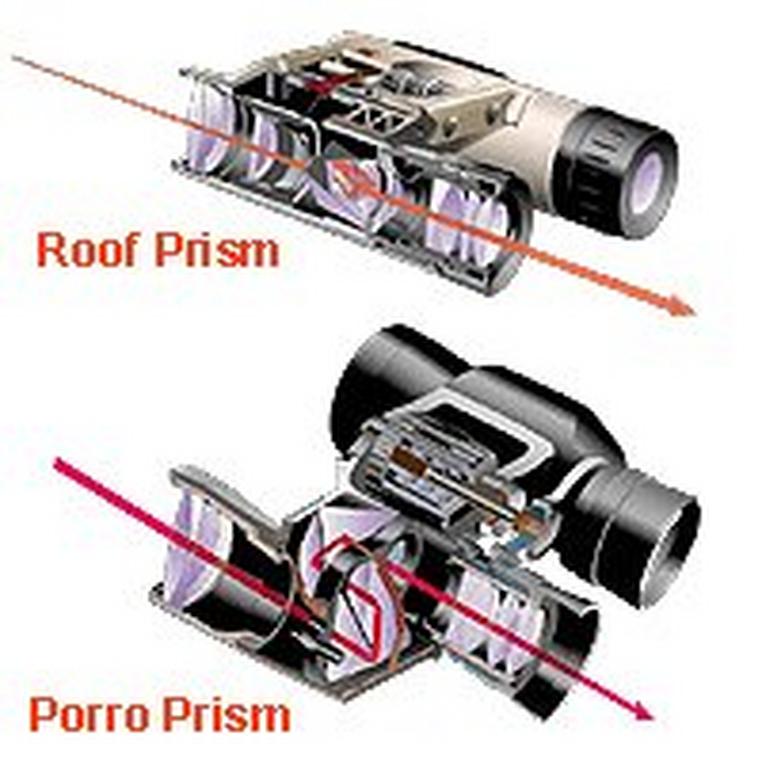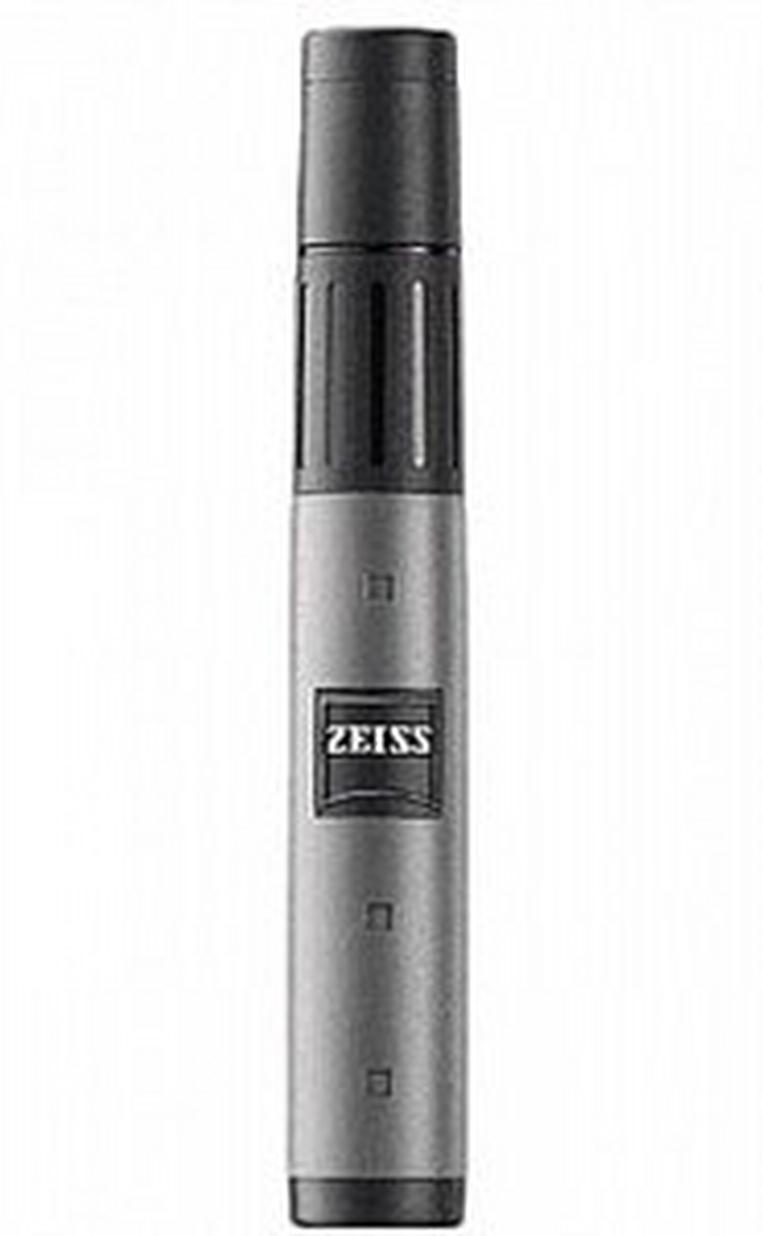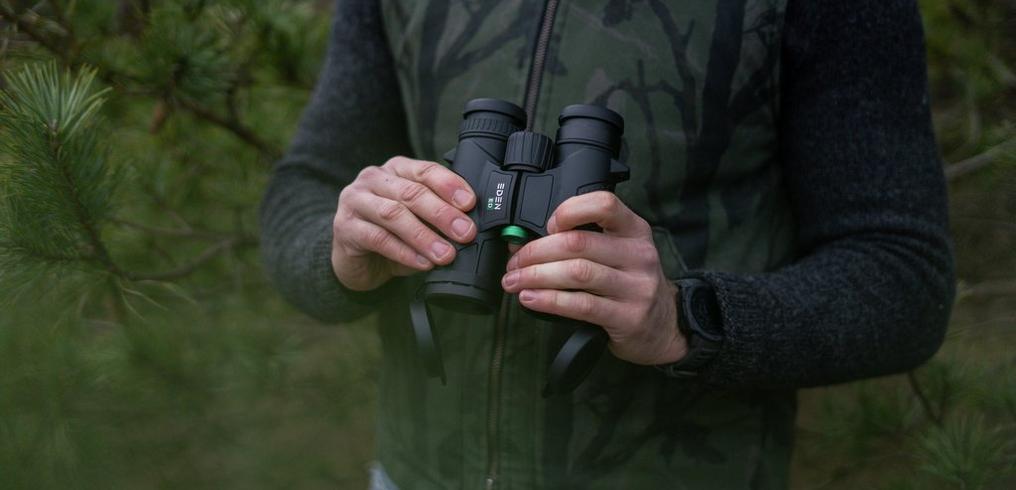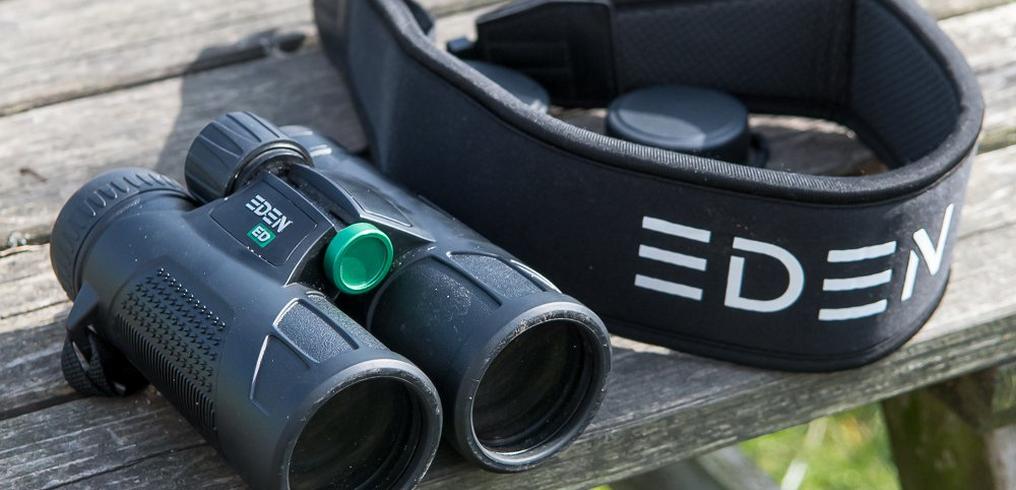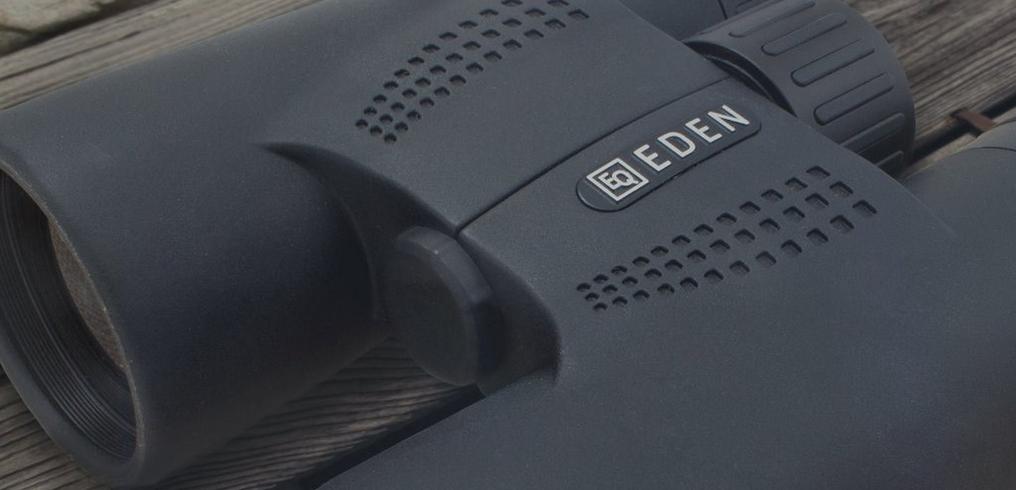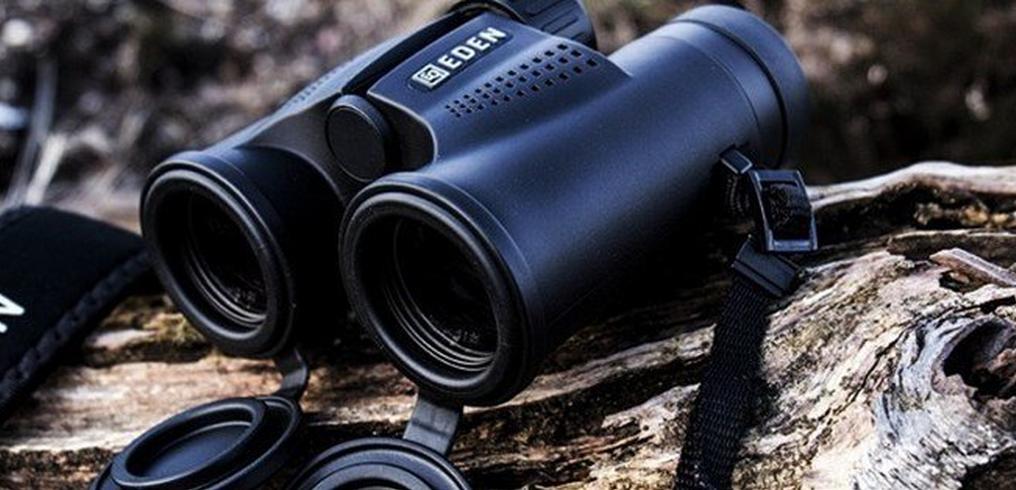Types of binoculars
The majority of viewing instruments are made up of two monoculars that are mounted on one frame to make up a pair of binoculars. Each half is comprised of an ocular (the part you look through) and an objective(the lens system situated at the back of the binoculars). Located between the ocular and the objective is the prism system, which ensures that an inverted image is projected in an upright position. The prism also shortens the optical path, resulting in a sleeker and more compact construction.
There are 2 types of prisms. The Porro prism ensures that the ocular and the objective are offset or not in alignment with each other. The design of the roof prism allows the ocular and the objective to be aligned with each other, resulting in a sleeker and more compact construction. Roof prism binoculars are rather more difficult to manufacture, making them more expensive than Porro prism binoculars. One advantage though is that it is easier to seal them, making them watertight and less susceptible to dust and damage in the internal lenses.
There are binoculars with a centre focus system and those with an individual focus system. (See 'Focusing').
A monocular viewing instrument is actually one half of a pair of binoculars. The greatest advantage is that it is easy and convenient to carry around with you. You can easily pop it into your pocket or bag and always have it on hand. A monocular is great as an extra viewer but it is not ideal if you want something for more intensive use. Nonetheless, a high quality monocular is still a pleasure to own. And even some of the slim, 'pen models' are sometimes astonishingly good, in spite of all the limitations.
Besides ordinary binoculars, there are also telescopes available on the market. They are monocular viewers with a (very) high magnification factor ranging between 20 and 75x. Telescopes do not fall within this range and are not generally used because of their construction and high magnification factor. In fact, they can only be used with a tripod. Their powerful magnification factor makes them ideal for bird watching but you will not see them being used at a pop concert.
In a nutshell, before you buy your ideal pair of binoculars (which, of course, do not exist), you need to take many matters into consideration, for instance, what you want to use the binoculars for, what your minimum requirements are, and how much money you are prepared to spend. Take the time to gather all the information you need and you will not be disappointed in your purchase!
